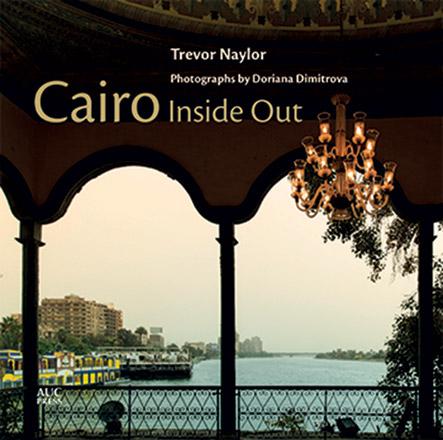You are here
Interior vistas off the beaten track
By Sally Bland - Jun 11,2017 - Last updated at Jun 11,2017

Cairo Inside Out
Trevor Naylor
Photos by Doriana Dimitrova
Cairo-New York: The American University in Cairo Press, 2016
Pp. 146
This book is not a travel guide but an exploration in text and photos of what makes Cairo such an alluring city despite its fully deserved reputation for being overcrowded, noisy and polluted. The author, Trevor Naylor, a frequent visitor and sometime resident of the city, hit upon the idea of producing such a book while sitting in the legendary Café Riche in downtown Cairo. Savouring the late-afternoon atmosphere, he wondered if it was possible to write a book that captured the mood and light so unique to Cairo.
Turning the pages of “Cairo Inside Out”, one can only answer Naylor’s question with a resounding yes, but only because his engaging narrative is counterpoised to Doriana Dimitrova’s striking photos. No page of text is without a picture that literally/graphically illustrates the interplay of light and shadow that is at the heart of the mood that the book seeks to convey. Both Naylor and Dimitrova are experts in their field, but it is the combination of their crafts that creates the book’s aesthetic impact which is often breathtaking.
The book title is a play on words, but it does not so much reference the idea of turning something inside out in order to exhaust all possibilities — remember, this is not a comprehensive guidebook. Rather, “inside out” is a key concept in Naylor’s idea of how to fully enjoy Cairo. Sitting in the Café Riche, “it came to me that in the many hours I have spent sitting or wandering around Cairo, most of it is spent inside, looking at the world outside and observing the streets and people as though on a screen… feeling the soul of Cairo is generally an indoor experience”. (p. 11)
Looking out from an interior space has many advantages: Inside it is cooler, quieter and protected from jostling crowds, traffic and overly persistent sellers. Naylor compares many of the places covered in the book to sanctuaries, optimal places for recovering from the exhaustion of navigating the city, but also for observing the street life and shifting light and colours of the city, which appear most astonishing at dawn or dusk.
There is another reason that this documentation of selected places is important, for Cairo is changing. “The Cairo you see here may well be coming to the end of its time… Cairo, like all cities, is about people… it is they, as much as the place itself, who make a certain business or a particular place so special to visit.” (p. 12)
Naylor expresses doubt as to whether coming generations will pursue the same trades and way of life as their parents.
Not being a guide book, “Cairo Inside Out” does not cover the main monuments usually visited by tourists, but there are a few notable exceptions, such as the pyramids at Giza, which the book recommends viewing from a different angle in accordance with the “inside-out” approach. Also, a few tourist traps are billed as “worth falling into”.
Most of the book, however, suggests ways of exploring the city, often by foot, to discover charming off-the-beaten-track venues. It is organised in chapters by area: Nile and Zamalek, downtown Cairo, City Gates to the Muqattam Hills, Khan Al Khalili, old Cairo to Maadi, and Pyramids and Pharaohs. Moving from quarter to quarter, the type of places highlighted also changes from houseboats, mansions, hotels, café and bookshops, to markets, mosques, churches and mausoleums.
Regardless of the venue, many of the photos show elegant staircases of different styles, some of them enhanced by light filtering in from a window. Another recurring theme is viewing a garden or other green area through the windows of a cafe or restaurant. In many pictures, the juxtaposition of past and present, ancient and modern, in a single site, is astonishing.
There are many surprises even for those who have visited Cairo repeatedly. Some of the most beautiful pictures are of the inside of the Nilometer’s cone, views from the Sofitel Hotel, the Ibn Tulun and Blue Mosques, and the Manial Palace — “one of Cairo’s greatest yet least visited treasures”. (p. 114)
“Cairo Inside Out” is not a book to be read once only. One will want to return to it again and again. For those who have visited Cairo once or even many times, there are scenes that invite to a new visit. For first time visitors, it is inspiration to embark on a more personal and meaningful tour by adding lesser-known places to the usual tourist itinerary.
Related Articles
BAGHDAD, Iraq — When Maher Abu Hissam started his Baghdad bookshop two decades ago he was selling up to 40 books a day, such was the hunger
In the past few decades, the term globalisation has been used to refer to the relative eclipse of borders by multinational conglomerates and communication systems, such as the Internet. This book, however, returns to an earlier stage of globalisation that coalesced in the late 18th and early 19th century.
The Gun Smoke Still Lingers… memories through India, Jordan and beyondAnn O’NeillUK: Gilgamesh Publishing, 2015Pp.





















